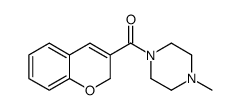41873-72-7
| Name | 2h-chromene-3-carbonyl chloride |
|---|---|
| Synonyms |
chlorure d'acide chromene carboxylique-3
3-2H-Benzopyranoylchlorid 2H-1-Benzopyran-3-carbonylchloride |
| Density | 1.344g/cm3 |
|---|---|
| Boiling Point | 309.6ºC at 760mmHg |
| Melting Point | 67ºC |
| Molecular Formula | C10H7ClO2 |
| Molecular Weight | 194.61400 |
| Flash Point | 115.1ºC |
| Exact Mass | 194.01300 |
| PSA | 26.30000 |
| LogP | 2.22780 |
| Index of Refraction | 1.593 |
Synonym: Section 2 - COMPOSITION, INFORMATION ON INGREDIENTS
Risk Phrases: 20/21/22 34 Section 3 - HAZARDS IDENTIFICATION EMERGENCY OVERVIEW
Harmful by inhalation, in contact with skin and if swallowed. Causes burns.Moisture sensitive. Potential Health Effects Eye: Causes eye burns. Skin: Causes skin burns. Ingestion: Causes gastrointestinal tract burns. Inhalation: Causes chemical burns to the respiratory tract. Chronic: Not available. Section 4 - FIRST AID MEASURES Eyes: Immediately flush eyes with plenty of water for at least 15 minutes, occasionally lifting the upper and lower eyelids. Get medical aid immediately. Skin: Get medical aid immediately. Immediately flush skin with plenty of water for at least 15 minutes while removing contaminated clothing and shoes. Ingestion: Do not induce vomiting. Get medical aid immediately. Inhalation: Get medical aid immediately. Remove from exposure and move to fresh air immediately. If not breathing, give artificial respiration. If breathing is difficult, give oxygen. Notes to Physician: Treat symptomatically and supportively. Section 5 - FIRE FIGHTING MEASURES General Information: As in any fire, wear a self-contained breathing apparatus in pressure-demand, MSHA/NIOSH (approved or equivalent), and full protective gear. Extinguishing Media: Use foam, dry chemical, or carbon dioxide. Section 6 - ACCIDENTAL RELEASE MEASURES General Information: Use proper personal protective equipment as indicated in Section 8. Spills/Leaks: Vacuum or sweep up material and place into a suitable disposal container. Section 7 - HANDLING and STORAGE Handling: Do not breathe dust, vapor, mist, or gas. Do not get in eyes, on skin, or on clothing. Use only in a chemical fume hood. Storage: Store in a cool, dry place. Store in a tightly closed container. Corrosives area. Store under an inert atmosphere. Section 8 - EXPOSURE CONTROLS, PERSONAL PROTECTION Engineering Controls: Facilities storing or utilizing this material should be equipped with an eyewash facility and a safety shower. Use adequate ventilation to keep airborne concentrations low. Exposure Limits CAS# 41873-72-7: Personal Protective Equipment Eyes: Not available. Skin: Wear appropriate protective gloves to prevent skin exposure. Clothing: Wear appropriate protective clothing to prevent skin exposure. Respirators: Follow the OSHA respirator regulations found in 29 CFR 1910.134 or European Standard EN 149. Use a NIOSH/MSHA or European Standard EN 149 approved respirator if exposure limits are exceeded or if irritation or other symptoms are experienced. Section 9 - PHYSICAL AND CHEMICAL PROPERTIES Physical State: Solid Color: pale yellow Odor: characteristic odor pH: Not available. Vapor Pressure: Not available. Viscosity: Not available. Boiling Point: Not available. Freezing/Melting Point: 67 - 69 deg C Autoignition Temperature: Not available. Flash Point: Not available. Explosion Limits, lower: Not available. Explosion Limits, upper: Not available. Decomposition Temperature: Solubility in water: Specific Gravity/Density: Molecular Formula: C10H7ClO2 Molecular Weight: 194.62 Section 10 - STABILITY AND REACTIVITY Chemical Stability: Not available. Conditions to Avoid: Incompatible materials, exposure to moist air or water. Incompatibilities with Other Materials: Strong oxidizing agents, bases. Hazardous Decomposition Products: Hydrogen chloride, chlorine, carbon monoxide, carbon dioxide. Hazardous Polymerization: Has not been reported Section 11 - TOXICOLOGICAL INFORMATION RTECS#: CAS# 41873-72-7 unlisted. LD50/LC50: Not available. Carcinogenicity: 2H-Chromene-3-carbonyl chloride - Not listed by ACGIH, IARC, or NTP. Section 12 - ECOLOGICAL INFORMATION Section 13 - DISPOSAL CONSIDERATIONS Dispose of in a manner consistent with federal, state, and local regulations. Section 14 - TRANSPORT INFORMATION IATA Shipping Name: CORROSIVE SOLID, TOXIC, N.O.S.* Hazard Class: 8 (6.1) UN Number: 2923 Packing Group: III IMO Shipping Name: CORROSIVE SOLID, TOXIC, N.O.S. Hazard Class: 8 (6.1) UN Number: 2923 Packing Group: III RID/ADR Shipping Name: CORROSIVE SOLID, TOXIC, N.O.S. Hazard Class: 8 (6.1) UN Number: 2923 Packing group: III Section 15 - REGULATORY INFORMATION European/International Regulations European Labeling in Accordance with EC Directives Hazard Symbols: C Risk Phrases: R 20/21/22 Harmful by inhalation, in contact with skin and if swallowed. R 34 Causes burns. Safety Phrases: S 26 In case of contact with eyes, rinse immediately with plenty of water and seek medical advice. S 36/37/39 Wear suitable protective clothing, gloves and eye/face protection. S 45 In case of accident or if you feel unwell, seek medical advice immediately (show the label where possible). WGK (Water Danger/Protection) CAS# 41873-72-7: No information available. Canada None of the chemicals in this product are listed on the DSL/NDSL list. CAS# 41873-72-7 is not listed on Canada's Ingredient Disclosure List. US FEDERAL TSCA CAS# 41873-72-7 is not listed on the TSCA inventory. It is for research and development use only. SECTION 16 - ADDITIONAL INFORMATION N/A |
| Hazard Codes | C:Corrosive |
|---|---|
| Risk Phrases | R20/21/22;R34 |
| Safety Phrases | S26-S36/37/39-S45 |
| HS Code | 2916190090 |
|
~% 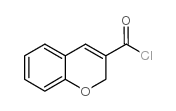
41873-72-7 |
| Literature: Gupta, R. C.; Pratap, Ram; Prasad, C. R.; Anand, Nitya Indian Journal of Chemistry, Section B: Organic Chemistry Including Medicinal Chemistry, 1982 , vol. 21, # 4 p. 344 - 347 |
|
~% 
41873-72-7 |
| Literature: Satoh; Stanton; Hutchison; Libby; Kowalski; Lee; White; Kimble Journal of Medicinal Chemistry, 1993 , vol. 36, # 23 p. 3580 - 3594 |
|
~% 
41873-72-7 |
| Literature: Satoh; Stanton; Hutchison; Libby; Kowalski; Lee; White; Kimble Journal of Medicinal Chemistry, 1993 , vol. 36, # 23 p. 3580 - 3594 |
|
~% 
41873-72-7 |
| Literature: Mouysset, Genevieve; Payard, Marc; Grassy, Gerard; Tronche, Pierre; Dabire, Hubert; et al. European Journal of Medicinal Chemistry, 1987 , vol. 22, p. 539 - 544 |
|
~% 
41873-72-7 |
| Literature: Gupta, R. C.; Pratap, Ram; Prasad, C. R.; Anand, Nitya Indian Journal of Chemistry, Section B: Organic Chemistry Including Medicinal Chemistry, 1982 , vol. 21, # 4 p. 344 - 347 |
| Precursor 5 | |
|---|---|
| DownStream 10 | |
| HS Code | 2916190090 |
|---|---|
| Summary | 2916190090 unsaturated acyclic monocarboxylic acids, their anhydrides, halides, peroxides, peroxyacids and their derivatives。supervision conditions:AB(certificate of inspection for goods inward,certificate of inspection for goods outward)。VAT:17.0%。tax rebate rate:9.0%。MFN tariff:6.5%。general tariff:30.0% |
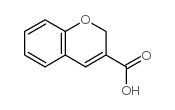
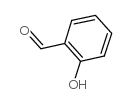
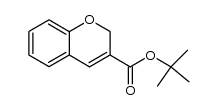


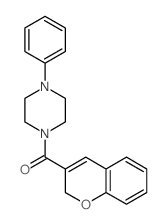
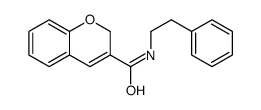
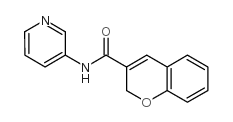
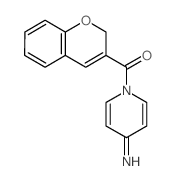
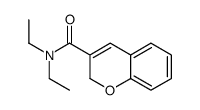
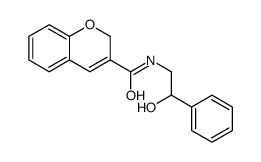
![N-[2-(diethylamino)ethyl]-2H-chromene-3-carboxamide structure](https://image.chemsrc.com/caspic/004/83823-16-9.png)

